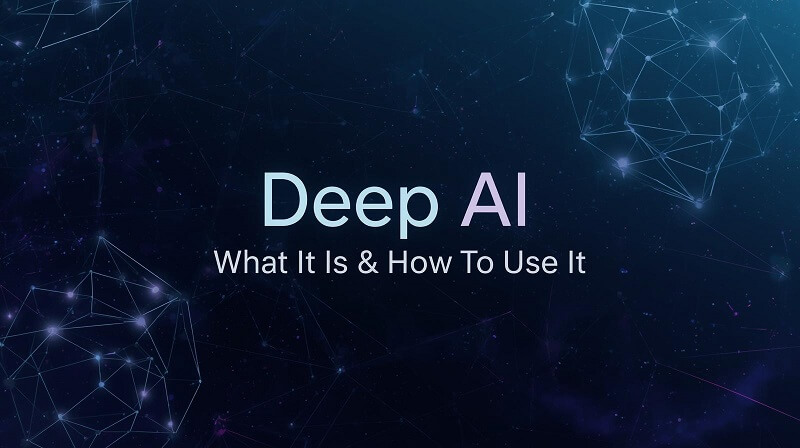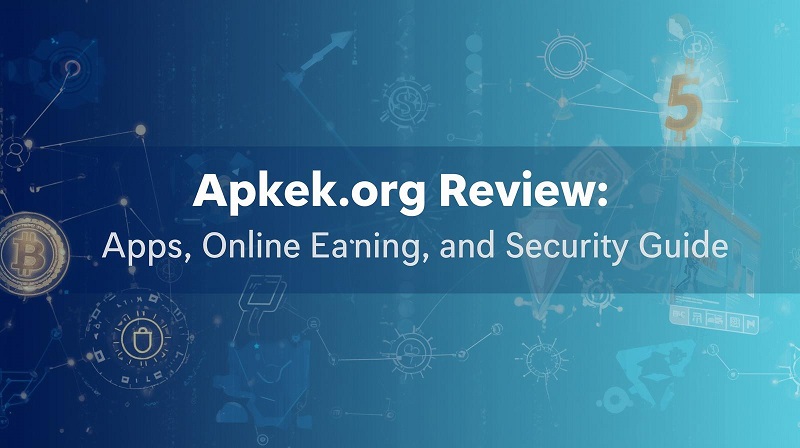How programmers develop has seen a huge shift over the past ten years. Although antique college desktop IDEs including Eclipse, Visual Studio, and IntelliJ continue to be in favour, the cloud IDE phenomenon is revolutionizing the developer revel in. With a browser and an internet connection, you can code, debug, and execute your programs without being concerned with large installations or device compatibility.
This guide explores the best free cloud IDEs for programmers in 2025. We’ll dive deep into their features, strengths, limitations, and why they can be great alternatives to desktop-based coding environments.
What is a Cloud IDE?
A cloud IDE is an online development environment for software that executes on remote servers instead of your own machine. While traditional IDEs require coding expertise, many modern no-code tools to build SaaS apps without coding now offer browser-based interfaces, allowing users to create and manage applications without installing gigabytes of software.
Key features are:
- Accessibility: Code from everywhere, on any device.
- Collaboration: Collaborate on initiatives actual-time, like Google Docs for code.
- Scalability: Scale computing assets as wished.
- Integration: Most cloud IDEs are preloaded with Git, Docker, testing equipment, and CI/CD pipelines.
For developers, this translates into faster setup, less gadget conflict, and hassle-loose collaboration.
Why Use Free Cloud IDEs?
You may ask yourself — why should a developer move from desktop tools to free cloud IDEs? Here are some reasons:
- Cost Efficiency: Most free plans offer adequate resources for tiny projects and individual development.
- Cross-Platform Development: Develop from Windows, macOS, Linux, or maybe tablets.
- Real-Time Collaboration: Ideal for pair programming, allotted groups, or coding bootcamps.
- No Heavy Installations: No time wasted putting in SDKs or dependencies on every gadget.
- Instant Updates: Tools stay up to date with the latest model always.
In brief, cloud IDEs empower flexibility and reduce friction, permitting programmers to recognize coding in place of system control.
Top Free Cloud IDEs for Programmers
Let’s review the top free cloud IDEs in 2025 that programmers can rely on. Each has unique features, so we’ll cover what makes them special.
1. GitHub Codespaces
Overview: GitHub Codespaces is a strong cloud IDE integrated directly with GitHub repositories. Developers can start a containerized environment with Visual Studio Code (VS Code) functionality in their browser.
Key Features:
- Smooth GitHub integration.
- Supports various programming languages.
- Customizable environments with devcontainers.
- Real-time collaboration through Live Share.
Why It’s Awesome for Developers: If you already have your projects hosted on GitHub, Codespaces offers the most intuitive workflow. You can write code, commit, and push changes all without ever leaving the browser.
Free Plan Restrictions:
- 60 core-hours of use per month.
- 15 GB storage per month.
2. Replit
Overview: Answer The preferred platform for students, hobbies and professionals has emerged as an easy-to-use strong online coding experience yet.
Top Features:
- Instant IDE for more than 50 languages.
- Integrated hosting and deployment.
- AI-based coding assistant (Ghostwriter).
- Real-time multi-player collaboration.
- Simple API and database integration.
Why It’s Great for Programmers: Replit is very beginner-friendly but also geared enough for serious professional projects. Its collaborative features make it perfect for hackathons and classrooms.
Free Plan Limitations:
- Restricted compute power.
- Storage and memory limits for bigger projects.
3. Gitpod
Overview: Gitpod is a developer-centric cloud IDE with a focus on automation. It launches pre-coded environments directly connected to your Git repositories.
Key Features:
- Preconfigured workspaces installation via .Gitpod.Yml.
- The vs supports the code and jetbrain-based editors.
- Scales with Kubernetes-primarily based infrastructure.
- Ideal for CI/CD and DevOps workflows.
Why It’s Good for Programmers: For consistency and automation, Gitpod makes all developers on your crew working within an equal environment. It removes the dreaded “works on my system” difficulty.
Free Plan Restrictions:
- 50 hours of usage per month.
- Projects terminated after 30 minutes of idle time.
4. AWS Cloud9
Overview: AWS Cloud9 is a cloud-based totally IDE evolved by Amazon Web Services. It’s in particular reachable for developers who work with serverless apps, cloud-native architectures, and AWS services.
Main Features:
- Feature-wealthy code editor with debugger and terminal.
- Strong integration with the AWS surroundings.
- Real-time co-authoring.
- Pre-configured for several programming languages.
Why It’s Great for Programmers: If you’re building projects that are very dependent on AWS, this is the most integrated choice. You can code and deploy straight to AWS services directly from the same IDE.
Free Plan Limitations:
- You pay for the underlying AWS resources (EC2, storage, etc.).
- The IDE itself is free, but usage charges add up.
5. CodeSandbox
Overview: CodeSandbox is a clean, light cloud IDE quality acceptable for web improvement and the front-cease tasks.
Key Features:
- Rapid prototyping.
- Real time collaborative coding.
- Github integration.
Why It’s Great for Programmers: As a front-end developer, CodeSandbox provides unparalleled speed and ease. You can share live previews via a link.
Free Plan Limitations:
- Restricted execution time.
- Less performance for complex projects than desktop IDEs.
6. PaizaCloud IDE
Overview: PaizaCloud IDE is a lightweight cloud-based coding platform that gives developers instant access to development environments.
Key Features:
- Launches in less than 3 seconds.
- Terminal and browser preview are included.
- Easy drag-and-drop file support.
Why It’s Great for Programmers: For people who want a speedy, no-nonsense online coding environment, PaizaCloud IDE is solid and straightforward.
Free Plan Limitations:
- Projects automatically terminate after idle time.
- Restricted memory and computation.
7. Theia
Overview: Theia is an open-source desktop and cloud IDE framework, commonly referred to as a “cousin” of VS Code. Quite a number of cloud IDEs (such as Gitpod) are implemented on top of Theia.
Key Features:
- Modular and extensible architecture.
- Cross-platform.
- Full support for VS Code extensions.
- Self-hosting capability for enterprises.
Why it is great for the programmer: With Thai, developers or corporations can create their own Bespoke Cloud ID. It is favorable and favorable for various workflows.
Free Plan Limitations:
- As open-source, it necessitates setup and hosting.
Main Advantages of Free Cloud IDEs
- Exercise everywhere: Developers can switch between equipment without losing their work.
- Real -time cooperation: ideal for distributed teams working in geographical areas.
- No Setup Gimmicks: No installing heavy SDKs or dependencies.
- Cost Savings: Free tiers offer sufficient power for personal and small projects.
- Ongoing Updates: Always current with the latest frameworks and languages.
Potential Drawbacks of Free Cloud IDEs
Although free cloud IDEs are mighty, there are some drawbacks:
- Internet Dependency: You need a stable internet connection.
- Performance Limits: Free plans can limit memory, disk space, or runtime hours.
- Issues of privacy: Code lives on third-party servers.
- Seller lock-in: Some platforms lock you in their ecosystem.
Knowing these limitations helps the programmer decide when to use free levels and when to upgrade.
Use Cases of Free Cloud IDEs
Free cloud IDEs are not test environments only. They are suited in various real-world use cases:
- Learning & Education: Suitable for students and coding bootcamps.
- Prototyping: Rapid test of new concepts without software installation.
- Hackathons: Collaborative coding with fellow team members in real-time.
- Remote Work: Teams coding at different time zones.
- Side Projects: Hobbyists or freelancers developing smaller applications.
Future of Cloud IDEs in Programming
By 2025, cloud IDEs will no longer be a specialty. With remote workers, distributed teams, and the requirement for speedier collaboration, they are going mainstream. AI integration (e.g., GitHub Copilot, Replit Ghostwriter) is also making them even more intelligent.
In the coming future, look out for:
- Greater integration with cloud services.
- Intelligent debugging with AI help.
- More offline capability.
- Enterprise-level scalability.
Fast Comparison of Free Cloud IDEs
Though every IDE has its strengths, here’s a quick overview:
- GitHub Codespaces: Ideal for GitHub users.
- Replit: Ideal for beginners, hobbyists, and team collaboration.
- Gitpod: Ideal for automation and DevOps teams.
- AWS Cloud9: Ideal for AWS-dominant workflows.
- CodeSandbox: Ideal for front-end web developers.
- PaizaCloud IDE: Ideal for temporary coding sessions.
- Theia: Ideal for in-house enterprise IDE configurations.
Conclusion
Free cloud IDEs are remodeling the manner programmers work. They provide accessible, price-green, and collaborative systems that take away the barriers of traditional desktop setups. Whether you’re a beginner writing your first line of code or an experienced developer dealing with complicated initiatives, there’s an unfastened cloud IDE that fits your workflow.
In 2025, the trend for browser-based total development is more strong than ever. With those gear, programmers are able to write everywhere, collaborate effects, and give attention to what topics maximum — developing outstanding software.









